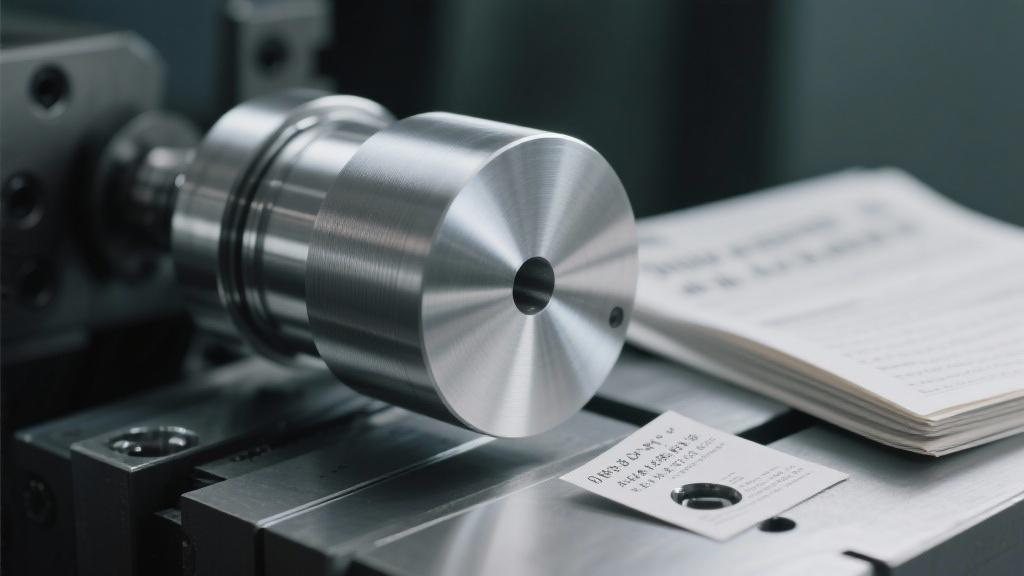Through an examination of the correlation between hardness and machining performance, we will uncover the practical implications for engineers and manufacturers. Harder alloys may provide superior strength but can pose challenges such as increased tool wear and more complex machining parameters. Conversely, softer alloys may facilitate easier machining but at the potential cost of durability.
By analyzing case studies and expert insights, this article aims to equip readers with the knowledge needed to make informed choices when selecting aluminum alloys for specific machining applications. Whether you’re a seasoned professional or new to the field, understanding the interplay between aluminum alloy hardness and machining efficiency is key to achieving optimal results. Join us as we explore this critical aspect of manufacturing and uncover best practices that enhance productivity and precision in machining operations.
Question: What is the effect of aluminum alloy hardness on machining?
Answer: When it comes to machining aluminum alloys, hardness plays a pivotal role in determining the efficiency and effectiveness of the process. Hardness, measured by various scales such as Brinell or Rockwell, directly impacts several critical factors, including tool wear, machining speed, and surface finish.
Understanding Hardness and Its Influence on Machining
Aluminum alloys come in various compositions, and their hardness can significantly affect how they respond to cutting tools. Softer alloys, like the 1100 series, are easier to machine but may not be suitable for applications requiring high strength or wear resistance. On the other hand, harder alloys, such as the 7075 series, offer superior strength but can lead to increased tool wear and potential machining challenges.
Machining Parameters Based on Hardness
Adjusting machining parameters based on material hardness is crucial. For softer alloys, you might use higher feed rates and speeds, allowing for faster processing without sacrificing quality. Conversely, when working with harder alloys, you would typically opt for a lower feed rate and carefully monitor the cutting temperature to avoid tool failure.
Here’s a quick look at how different hardness levels can affect your machining strategy:
| Alloy Series | Hardness Range (HB) | Recommended Cutting Speed | Typical Tool Wear Rate | Surface Finish Quality |
|---|---|---|---|---|
| 1100 | 30-50 | High | Low | Excellent |
| 6061 | 70-100 | Medium High | Medium | Good |
| 7075 | 140-190 | Low | High | Fair |
Conclusion
The relationship between aluminum alloy hardness and machining is complex, yet essential to understand for optimal manufacturing practices. By carefully considering the attributes of the alloy being used, you can make informed decisions on tooling, speeds, and overall machining strategies. This ensures not only efficiency but also the quality of the final product. Whether you’re developing new prototypes or scaling production, understanding these dynamics will help you achieve better results in your machining endeavors.
How does aluminum alloy hardness impact tool wear?
The hardness of aluminum alloys significantly influences tool wear. Softer alloys usually result in lower tool wear, allowing for prolonged tool life. In contrast, harder alloys can wear cutting tools much faster, which means you may need to replace them more frequently.

This increased wear can lead to higher costs and affect production schedules, so it’s essential to consider the hardness of the alloy when planning machining operations.
What machining speeds are recommended for harder aluminum alloys?
When machining harder aluminum alloys, it’s generally advised to use slower cutting speeds. For example, harder alloys like 7075-T6 require slower speeds compared to softer alloys, to avoid overheating and tool failure. Maintaining the right speed is crucial for durability and to produce a quality finish.
<pOften, engineers adjust feed rates and spindle speeds based on the hardness to optimize the process, striking a balance between efficiency and tool longevity.
Can harder aluminum alloys affect surface finish quality?
Yes, the hardness of an aluminum alloy certainly impacts the surface finish quality during machining. Softer alloys tend to deliver better finishes compared to their harder counterparts. The intricate act of cutting harder materials may result in poorer surface quality and often necessitates additional finishing processes.
<pThis means that while you benefit from the strength of harder alloys, you may end up spending more time and resources on achieving the desired finish.
What machining parameters should be adjusted for different hardness levels?
Machining parameters such as feed rates, cutting speeds, and cooling methods must be tailored according to the hardness of the aluminum alloy being machined. For softer alloys, higher feed rates and speeds are generally preferable. Conversely, harder alloys often require lower feed rates to minimize tool wear and maintain control over the cutting process.
<pAdjusting these parameters effectively helps ensure both the longevity of the tooling and the quality of the machined part.
How can I determine which aluminum alloy to use for my project?
Choosing the right aluminum alloy involves weighing factors like strength requirements, machinability, and the specific application of the end product. If strength is your primary concern, harder alloys like 7075 are ideal, but they may complicate machining processes due to their toughness.
<pOn the other hand, if you value ease of machining and lower costs, softer alloys, such as 1100 series, might be a better fit. Ultimately, matching the alloy to your project needs is key to successful manufacturing.



